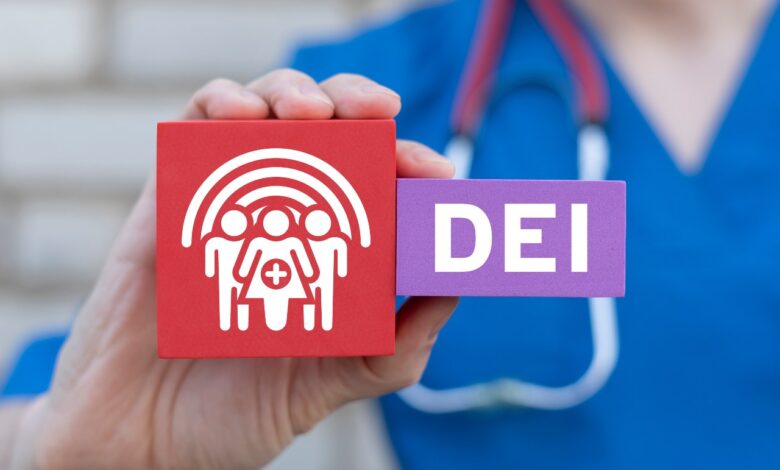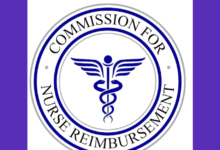DEI Meaning in Healthcare for Patients: Diversity, Equity, Inclusion

Do non-English speakers wait longer in the emergency room? Even if they speak English, how many people feel unwelcome or misunderstood at a healthcare center? Is the staff well-informed on the health disparities in their population? Nurses, doctors, and healthcare systems are seriously addressing many barriers to optimal healthcare, and DEI is a movement committed to tackling such obstacles.
What Does DEI Stand For?
DEI stands for Diversity, Equity, and Inclusion- critical values for overcoming health barriers and disparities.
Diversity: In healthcare, diversity often implies a diverse staff that reflects the demographics of the population served by the healthcare system to maximize communication and understanding with people of different languages, cultural perceptions, religious beliefs, sexual orientations, and life experiences to overcome conscious or unconscious prejudice and bias.
Equity: Hospitals advance toward new horizons of health equity, ensuring that staff has appropriate resources and a safe environment to do their jobs well and patients have practical access to what they need for optimum health while considering systemic barriers.
To understand equity clearly, it helps to make the distinction between equity and equality. According to Johns Hopkins Medicine, “Though health equality and health equity both strive to achieve better outcomes and access to health care services, they are not the same. Equality refers to equal access for everyone, while equity aims to adjust resources for disadvantaged groups to create an even playing field.” For example, explaining a course of treatment in clear English does not provide equal support to Spanish or Chinese speakers as to the English-speaking population. To achieve equity, the hospital needs translators or staff who speak the languages common in their area.
Inclusion: Health equity depends on inclusion, in other words, awareness, understanding, and appreciation of the unique identities, beliefs, life, and perspectives of both staff and patients so that all feel welcomed, valued, and supported.
What Are the Major Disparities?
Researching significant health disparities is not to assign blame but rather so that everyone—nurses, policymakers, health system leaders, researchers, doctors, and patients—can glean a deeper understanding of the challenges and opportunities for making lasting improvements in equitable healthcare delivery.
Read How Nursing Leadership Falls Upon All Generations
Healthcare disparities refer to differences in the quality of healthcare that individuals receive based on factors such as race, ethnicity, gender, sexual orientation, socioeconomic status, where they live, mental health, and other characteristics. Some of the significant health disparities in the U.S. may surprise you.
- Life Expectancy: The Agency for Healthcare Research and Quality reports that life expectancy dropped by 1.8 years in 2020 compared with 2019, with a higher proportion among Hispanic and Black people than non-Hispanic White people.
- Suicide: Disparities data show that White adolescents are more likely to commit suicide than Hispanic or Black adolescents.
- Cancer: Black men have 6% higher cancer incidence and mortality is 19% higher, while Black women have 8% lower cancer incidence than White women, but 12% higher cancer mortality. The Latin population, with the second fastest growth rate second to Asians, has a higher incidence of liver, stomach, and cervical cancers.
- Diabetes: Asian Americans have a higher rate of diabetes at lower BMIs (body mass index, an indicator of obesity).
Data increasingly shows that social, economic, environmental, and community conditions are social determinants of health. These social conditions and challenges pose barriers to providing high-quality care to all.
What Is Behind the Disparities?
Disparities have multiple root causes, but significant inequities in the U.S. are known to bring about healthcare gaps.
Despite serious efforts to eliminate prejudice in healthcare, many patients experience overt discrimination or implicit bias at the hospital. One solution is to increase the diversity of the hospital staff, increasing patient–provider trust and communication.
Another root cause is low income combined with high-cost health care and private health care insurance. Even though the U.S. government spends nearly twice as much on healthcare as other high-income nations, the out-of-pocket payments made by patients to providers are also among the highest. This considerable out-of-pocket cost, combined with the inequality in health insurance coverage, produces gaps in access to healthcare. 27.5 million non-elderly non-elderly adults in the U.S. were uninsured in 2021 and 69% of them cited the cost of coverage as the reason. The higher uninsured rates compound this among Black and Hispanic non-elderly non-elderly adults.
The good news is that the number of uninsured has decreased since the ACA (Affordable Care Act) was enacted in 2010.
Read About Autism Awareness Month and Why Inclusion Matters to this Population
How Is DEI Applied in the Healthcare Setting?
As well as promoting diversity in the healthcare staff, DEI approaches the disparities and barriers through training for equity nurses and healthcare staff, including all managers, on themes such as:
- Cultural competence and humility in healthcare, learning to respond and communicate effectively with people of diverse backgrounds in a way that appreciates differences and allows patients to feel respected and valued.
- Demographics of the organization’s patient populations,
- Health disparities related to diverse populations,
- Communication skills, such as active listening, teach-back, plain language, verbal and written instruction methods, non-verbal communication, and knowledge confirmation,
- Equity nursing theory, with concepts of justice, equitable care, and social determinants of health,
- How to meet unique needs of patients with cognitive or mental health impairments and disabilities.
- Equity dashboards are a tool to present critical data, measure the quality of care for specific segments of patient populations, and detect disparities.
- How culture influences attitudes and expectations about health, medications, treatment, healthcare, and healthcare providers.
Read Why Diversity, Equity, and Inclusion is Also Vital For Nurses
The heart of DEI is incorporating diverse perspectives and thinking into healthcare and other organizations, finding more creative solutions for improving health equity and strengthening health teams with full inclusion of all members. Nursa explores how nurses can improve health equity, and supports optimum health, intercultural understanding, and appreciation for patients and healthcare staff alike.







